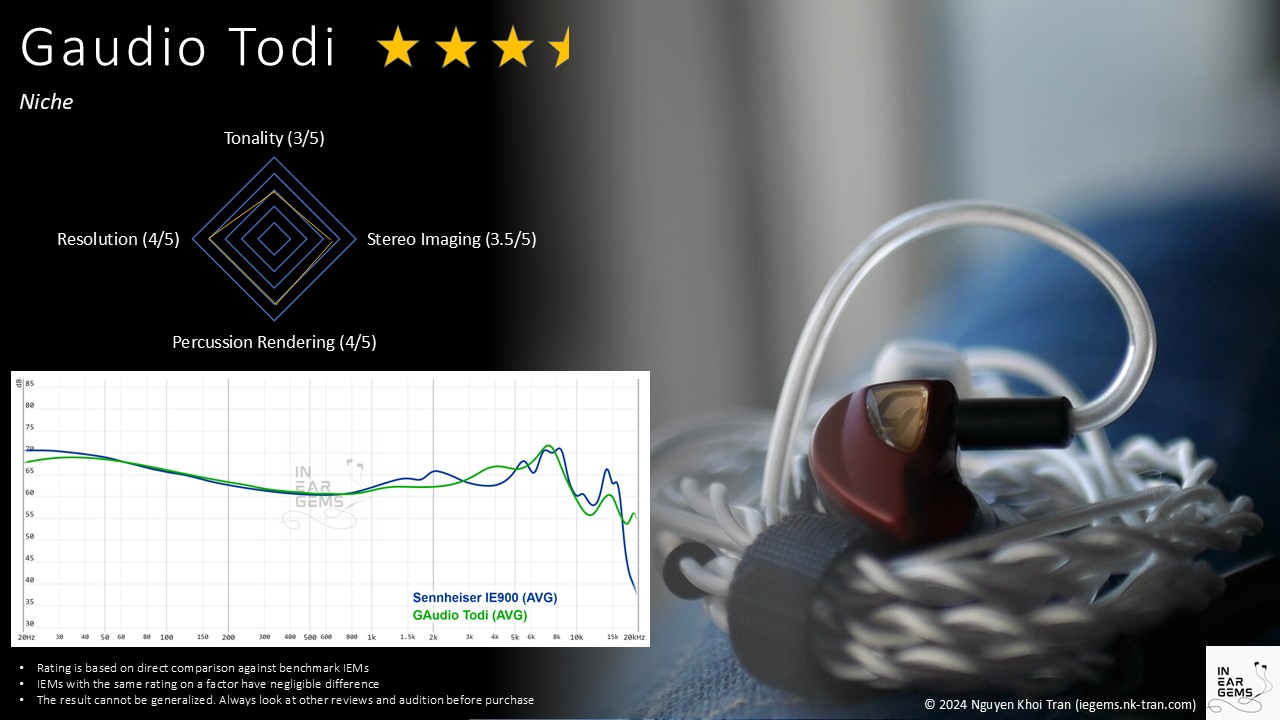Gaudio Todi - Niche
Do you know there are Swiss-made IEM?
Well, I haven’t, until recently when I get my mitts on the Todi from Gaudio. Let’s talk about this IEM.
Forewords
- What I look for in an IEM is immersion. I want to feel the orchestra around my head, track individual instruments, and hear all of their textures and details. I’m not picky about tonality, as long as it is not make the orchestra, violin, cellos, and pianos sound wrong.
- I rate IEMs within with a consistent scale from 1 (Poor) to 3 (Good) to 5 (Outstanding). An overall ranking of 3/5 or above is considered positive.
- Ranking list and measurement database are on my IEM review blog.
- The terminology for subjective impressions in this review is based on the Audio Wheel for reproduced sound defined in the technical report ITU-R BS.2399-0
- This review is based on a loaned unit from Gaudio, made possible via AudioGeek group (Thank you to Nicola Gianotti @ Gaudio and Kevin!). I have no affiliation with or financial interest in Gaudio.
- The unit retails for A$2450 at the time this review was published. Unaffiliated link: https://www.Gaudiolabs.com/todi/
General Information
Todi features two dynamic drivers, each measuring 6mm in diameter, arranged in a push-push configuration. These drivers provide a full-range response. Additionally, there are two Knowles tweeters that contribute to the treble sparkle.
The body of Todi is crafted from high-quality 3D-printed resin, coated in a satin black finish and hand-painted using a hypoallergenic German lacquer with a high gloss. It’s paired with a precision CNC aluminum alloy faceplate, which has a distinctive ‘Ferrari Red’ titanium-charged anodizing. Yup, Todi looks quite lovely in real life.
Non-sound Aspects
Packaging and accessories The packaging is rather compact, yet Gaudio manages to incorporate some artistic elements inside the box. Regarding accessories, you’ll find five pairs of Symbio silicone eartips, three pairs of foam tips, an earphone cable with interchangeable plugs, a faux leather case, and a cleaning tool for wax residue. The case is surprisingly compact, and the cable’s interchangeable jack is significantly longer than what I typically expect, which might be problematic for portable uses.
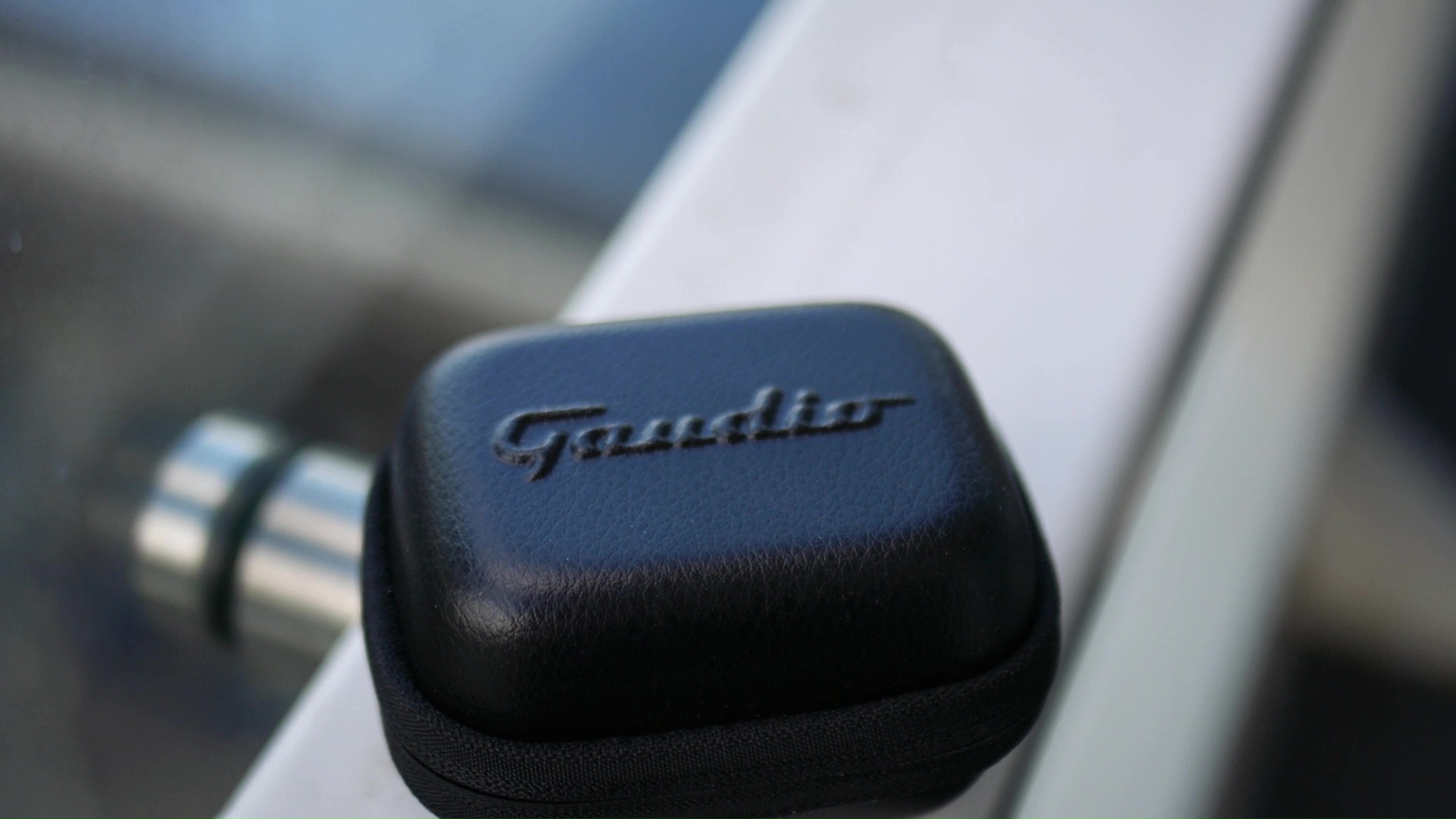
Ear pieces design I find the earpieces to be quite compact with medium-length and diameter nozzles.
Fit, comfort and isolation In terms of fit, comfort, and isolation, the small shells combined with the thoughtful nozzle design make the Todi IEM very comfortable to wear. Personally, I did not face any issues with pressure buildup or driver flex, which are common complaints with other models.
Ear tips recommendation: I recommend sticking with the stock Symbio ear tips, as they pair well with the IEM.
Sonic Performance
Testing setup:
- Sources: FiiO K7, iBasso DX300, HiBy R3II
- Cable: Stock cable, 4.4mm termination
- Ear tips: Stock Symbio eartips
The subjective impression is captured using the lexicon in the Sound Wheel below. I’ll clarify the terminology as I use them. If you want to see more details of the lexicon and related reference, please have a look at the technical report ITU-R BS.2399-0.
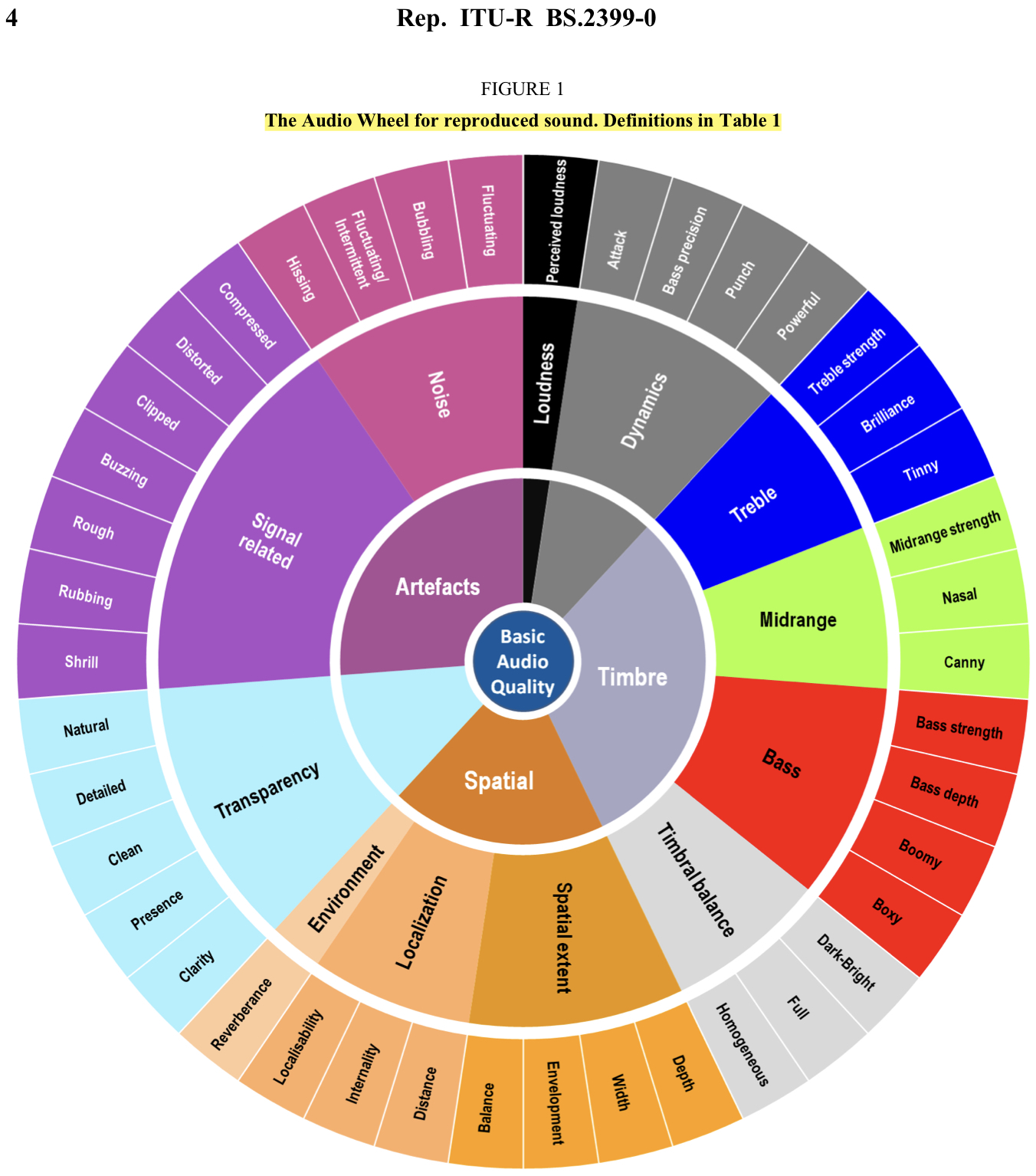
Timbre: It is helpful to think of an IEM as a filter that highlights or subdues different parts of the incoming audio signal. This effect can be measured objectively by the squiggly lines below, called Frequency Response (FR) graphs, which measure how loud an IEM is at different frequencies from 20Hz (bass) to 20kHz (upper treble). Subjectivity is how your ears and brain interpret the effect of that filter on your music and decide whether it is “enjoyable.” There are some “rules of thumb” when it comes to tonality, but most interesting IEMs usually bend the rules masterfully.
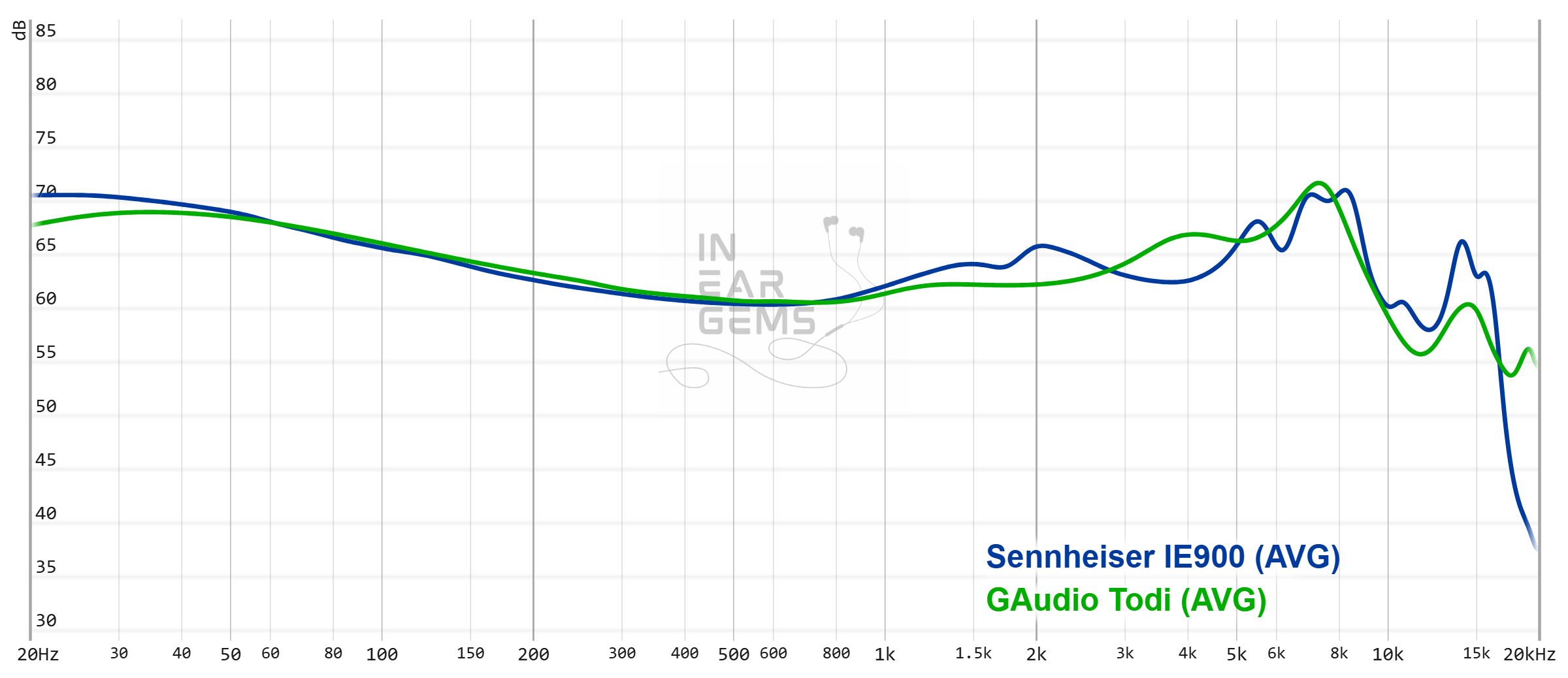
Figure shows the frequency response of Todi against the Harman in-ear target. Measurements were done with an IEC-711-compliant coupler and might only be compared with other measurements from this same coupler. Above 8kHz, the measurement likely does not match the response at the ear drum. Visit my graph database for more comparisons.
The Gaudio Todi IEM presents an unique sound signature that resists classification. I would reluctantly consider it to be a “U-shaped” profile. The unique character of Todi is largely due to an absence of ear gain compensation. Because of this tuning choice, I need to listen at a higher volume, which in turn draws attention to the lower and upper frequency ranges whilst overshadowing the midrange. Different types of music respond quite differently to this tonal profile.

When listening to Shivers by Ed Sheeran, I found that Todi’s handling of Ed’s vocals resulted in a presentation that was both muffled and sibilant. Despite the addtional energy from the bass region, the midrange lacks the emotive warmth one could hear from this track. On the other hand, Kiwi wa Boku ni Niteiru by See-Saw showcased Todi’s ability to keep the female vocals of Chiaki Ishikawa sounding natural, albeit slightly muted and lacking in vibrancy due to the lack of upper midrange.
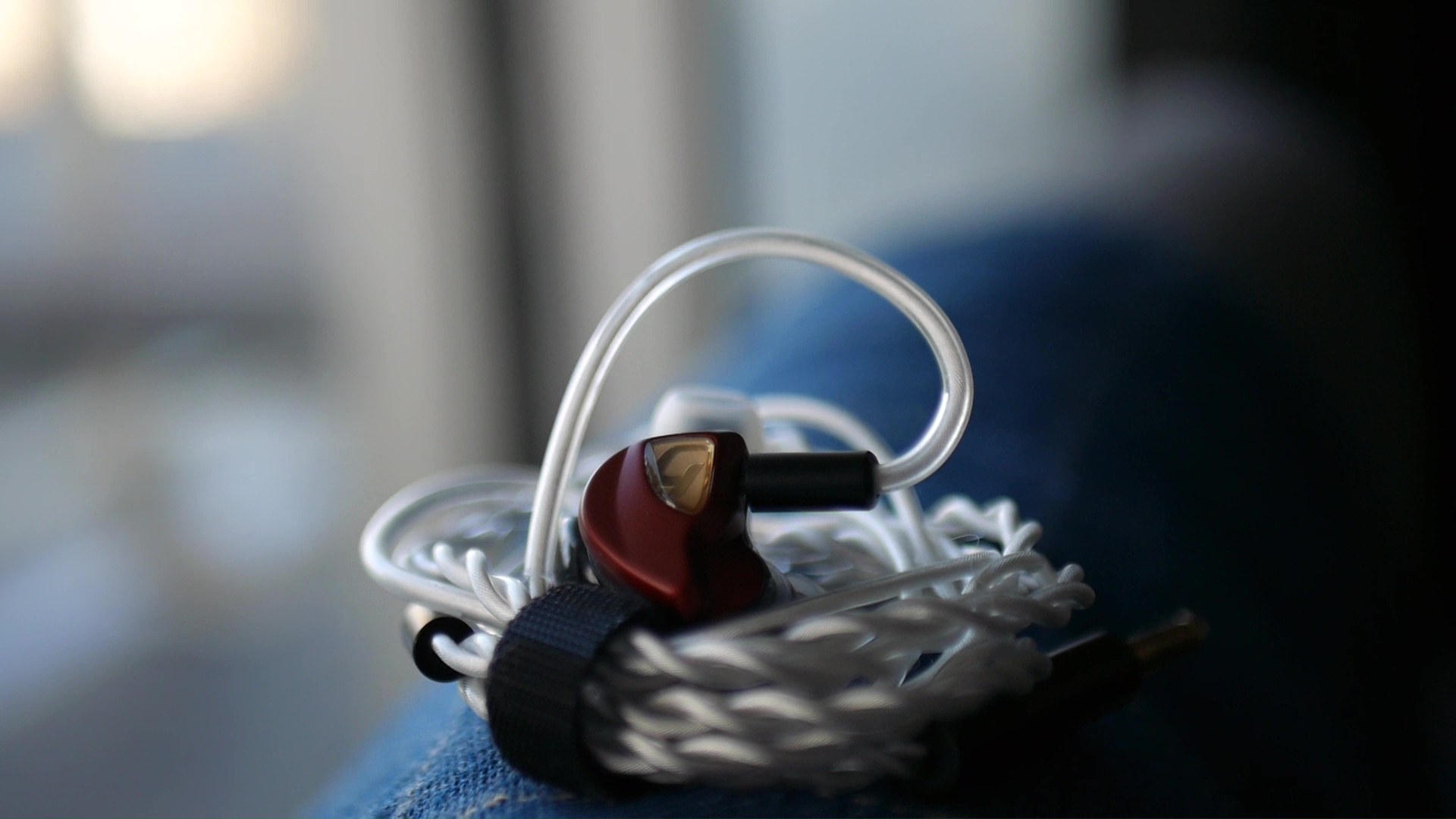
Shifting focus to orchestral pieces, Now We Are Free by 2CELLOS presented a scenario where Todi’s delivery felt less balanced. The cellos dominated the mix, resulting in a boominess that overshadowed higher-pitched elements, creating a somewhat muddled sound stage. While I appreciated the thumping bass, it overshadowed other instruments and deprived the track of its expected textures. Meanwhile, Playing God by Polyphia allowed Todi to excel. The guitars were delivered with a crispness and clarity that highlighted each pluck and strum beautifully, while kick drums and bass frequencies were rendered with sufficient energy, providing a lively backdrop against which the guitars thrived.
Interestingly, tracks featuring classical piano, like Bach’s Goldberg Variations, revealed a surprisingly adept performance from Todi. Here, the piano retained its tonal integrity across the spectrum, and the bass notes lingered pleasantly without crowding the other elements. The reverberation effects were particularly well-executed, culminating in a rich listening experience that showcased Todi’s strengths in upper treble extension. Similarly, in Ciaccona from Bach’s Violin Partita No.2 in D Minor, the tonal balance remained intact; the bass and treble interplay contributed to a satisfying auditory experience without distorting the fundamental qualities of the violin.
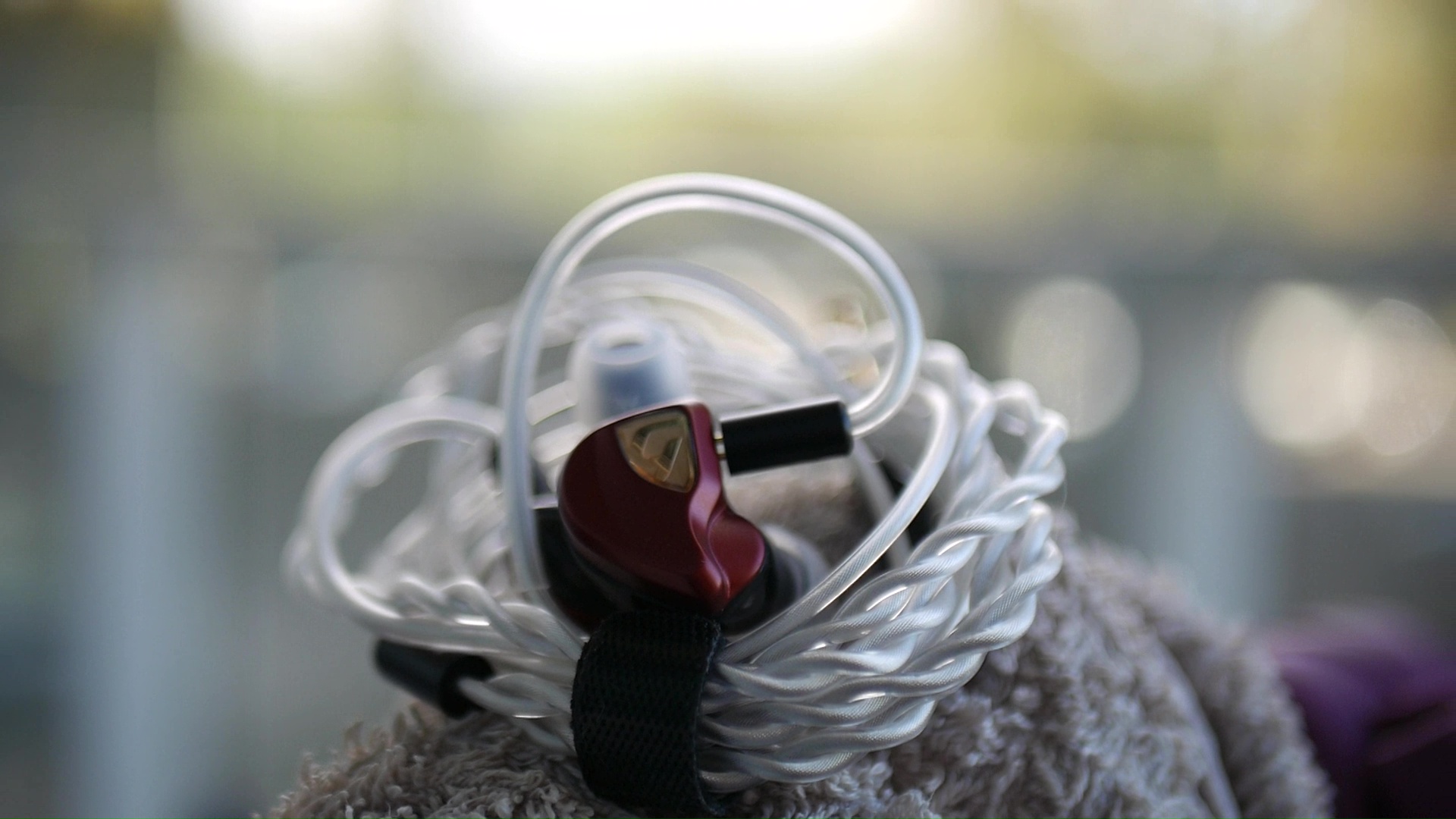
Lastly, while assessing Synchro BOM-BA-YE by Tokyo Kosei Wind Orchestra, the Todi IEM demonstrated a commendable ability to reproduce hand claps at the beginning of the track in a very natural manner, suggesting a good balance between various parts of treble frequencies. The lower brass instruments also sound quite realistic. However, higher brass lacked the brilliance one might expect.
In summary, the Gaudio Todi IEM offers a unique tonal experience that may suit certain tracks, while struggling with others, particularly in vocal presentations. Overall, I would rate the timbre and tonality of the Todi IEM a 3/5 - Good.
Bass and perceived dynamic:
The Todi IEM from Gaudio is characterized by a pronounced and engaging bass performance. Its bass is not only powerful but also displays a commendable dynamic range, bringing out the energy and nuances in the music. The overall bass presentation leans more towards a punchy and tactile attack.
One of the standout tracks that highlight Todi’s bass prowess is A Reckoning in Blood from The Ghost of Tsushima OST. During the crescendo around 01:10, the IEM demonstrates an ability to faithfully communicate dynamic shifts, which an ideal setup should accomplish. When the bass kicks in around the 02:50 mark, I can immediately sense the power behind each note. Though the attacks don’t possess the precise, laser-like sharpness typical of balanced armature (BA) drivers, they still deliver a notable “slam” that is satisfying and impactful. The texture and details in the bass line are commendable, though it feels that the tuning may slightly constrain these elements, making them less pronounced than it could be.
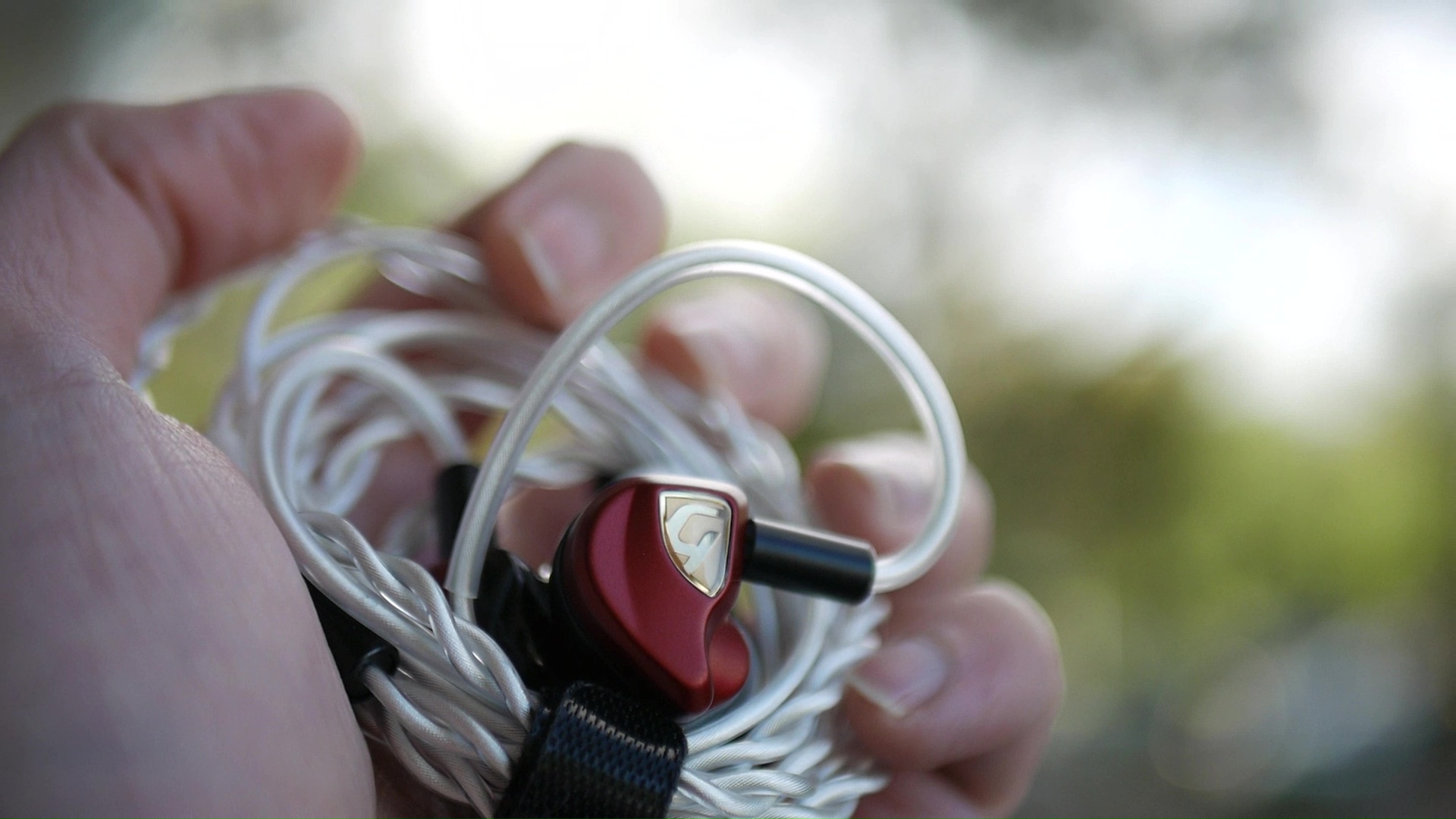
Another impressive demonstration of Todi’s control and dynamic expression can be found in Strength of a Thousand Men (Live) by Two Steps from Hell. This track demands a robust and grippy bass response, and the Todi delivers on that front. The bass feels controlled and textured, successfully avoiding the typical blurriness that plagues many IEMs when handling fast-paced bass lines. Each beat is rendered with snappy incisiveness, allowing the energy of the music to translate seamlessly into an engaging listening experience. The IEM manages to maintain the coherence of the bass line, lending it a growl instead of simply a low-pitched hum, further enhancing the dramatic impact of the track.
In summary, the bass and dynamics of the Todi IEM offer a powerful and textured experience, though I wish the bassline to be a bit “tighter” and more refined. I believe that this could be done by bringing the upper midrange back. As it stands, I would rate the bass and dynamic of the Todi 4/5 - Great.
Resolution: To me, “resolution” can be broken down into three components: (1) Sharpness, incisiveness, or “definition” of note attacks (see the figure above). (2) The separation of instruments and vocals, especially when they overlap on the soundstage. (3) The texture and details in the decay side of the notes. The first two give music clarity and make it easy to track individual elements of a mix. The last provides music details and nuances.

The Gaudio Todi IEM demonstrates a commendable level of resolution, though the tuning may not fully highlight its capabilities. The resolution is characterized by a solid performance in both micro-detail retrieval and the separation of overlapping layers.
In my exploration of the Todi’s resolution, I first turned to Ciaccona from Bach’s Violin Partita No. 2 in D Minor, performed by Kavakos. This piece allowed me to focus on the micro details, such as the bow’s interaction with the strings and the reverberation within the concert hall. The Todi impressively captures the smallest nuances, including the breath of the performer and the subtle decay of notes, which adds a layer of realism to the listening experience. However, while the violin strings sound dry, crisp, and lifelike, I noticed that certain micro textures, like the articulation of the bow and the slight scratch of the bow hair against the strings, were not as pronounced. This suggests that while the Todi is capable of resolving these details, the tuning may not emphasize them enough to be easily audible.
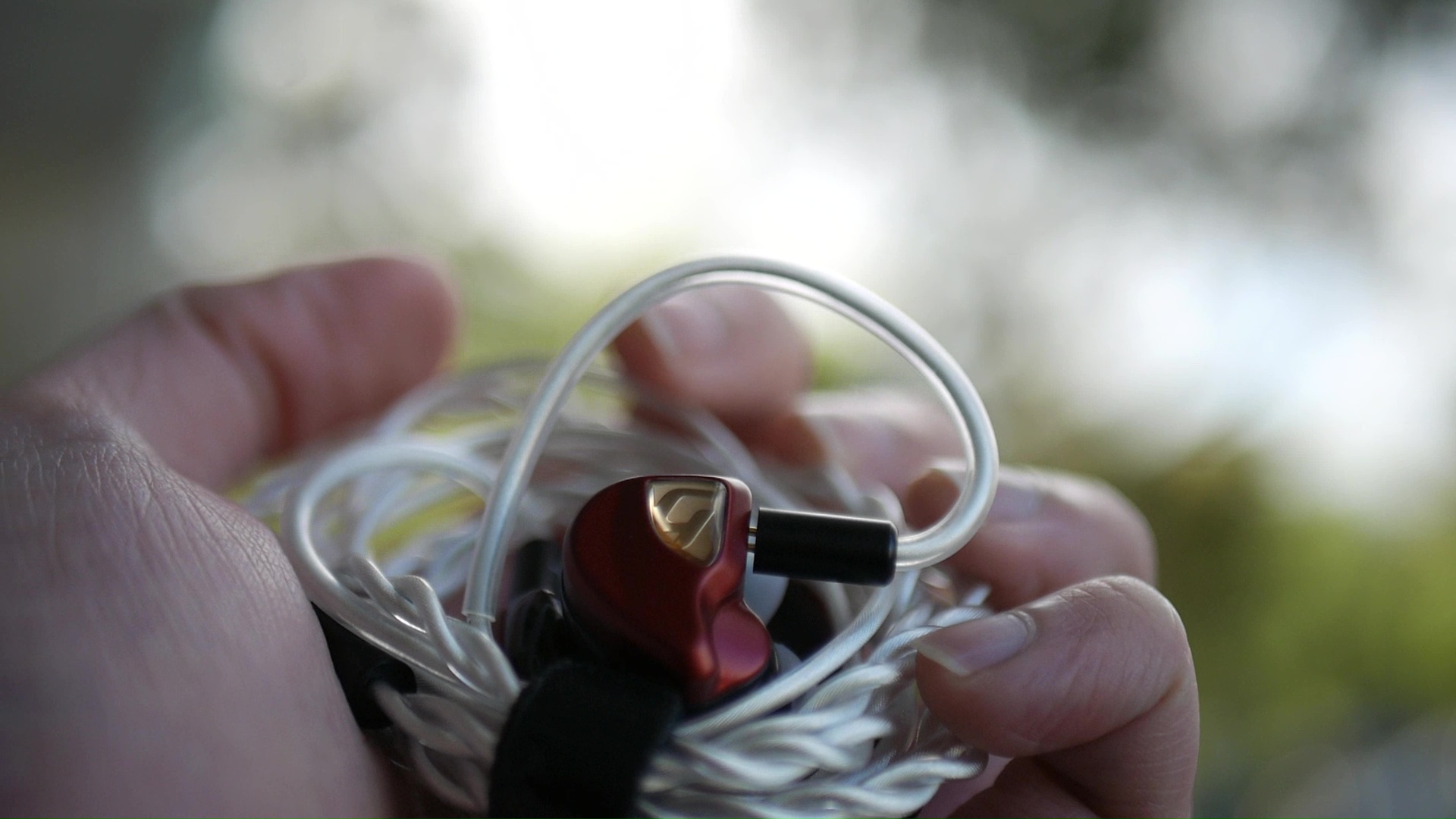
Next, I tested the Todi with the “controlled chaos” of ABC feat. Sophia Black by Polyphia, a track known for its complexity and overlapping layers. Here, the Todi’s composure under pressure was particularly impressive. I found it surprisingly easy to discern the faint overdubs by Sophia Black on the side channels right from the track’s opening. Even during the busier sections, where the lower midrange threatened to overpower the mix, the Todi maintained clarity, allowing me to follow individual elements without them becoming muddled. The separation of instruments was notable; rather than being mushed together, the layers were distinctly placed, creating a well-defined listening experience.
In summary, the Gaudio Todi IEM offers solid resolution capabilities, effectively separating and layering instruments while retrieving details with commendable clarity. Despite some limitations in highlighting certain micro textures, its performance in complex tracks demonstrates its potential. I would rate the resolution of the Todi at 4/5, reflecting its strong performance while acknowledging room for improvement.
Stereo imaging and soundstage: Stereo imaging or “soundstage” is a psychoacoustic illusion that different recording elements appear at various locations inside and around your head. Your brain creates based on the cues in the recording, which are enhanced or diminushed by your IEMs, your DAC, and your amplifier. In rare cases, with some specific songs, some IEMs can trick you into thinking that the sound comes from the environment (a.k.a., “holographic”)

While the lateral spread of the soundstage of Todi is somewhat limited, it still manages to create an immersive illusion thanks to its ability to convey the depth contrast between the foreground from the background. This sense of depth counterbalances the intimate soundstage, making the listening experience engaging despite the tight concentration of sound elements towards the center.
Listening to Memory from Gundam Seed Destiny OST, I noted that the Todi’s soundstage does not extend as far to the sides as one might hope. The majority of musical actions feel centered, lending to a perception of an intimate setting. However, what stands out is the IEM’s ability to convey differing distances between the sound elements. The Todi manages to make background components feel as though they originate from a space outside the immediate auditory sphere, thus enhancing the sense of depth significantly.

Similarly, during my listening of Shadow of Baar Dau, the Todi impresses with its spatial representation of sounds, particularly with elements located in the background. The string section and vocal chants are positioned in a manner that gives the impression of depth, making some sounds feel as if they are emanating from outside the confines of my head. However, as with the previous track, it is evident that many elements continue to concentrate towards the center of the soundstage, which could give listeners a boxed-in feeling.
Based on this assessment, I would rate the stereo imaging and soundstage of the Gaudio Todi at 3.5/5.
Driveability
Todi is not easy to drive. Even with 4.4mm output, I still need to turn the volume of my K7 amplifier higher than average. I also hear more refined bass response and less crowded soundstage when moving from small DAP like R3II to devices with more powerful amplifier like DX300 and K7.
Conclusions
I find myself conflicted about the Todi IEM by Gaudio for several reasons. On one hand, I appreciate their effort to implement a different tuning. On the other hand, I also feel that this particular tuning might be the main factor that limits the overall performance of the IEM.
Despite my reservations about the tuning, I cannot overlook the fact that it imparts a unique vibe to the Todi. After spending a few listening sessions with it, I found that this distinctiveness began to grow on me. Ultimately, I see the Todi as an interesting boutique IEM that offers something different. At the same time, it is a technically capable IEM. Niche recommendation.
What I like about this IEM:
- The sense of contrast between foreground and background on the soundstage
- Texture and detail of the bass
- Resolution underneath the coloured tonality
- Unique tonal profile
- The design
What could be improved:
- Tonal balance can be quite off with some tracks
- The tonal balance can overshadow the true resolution of this IEM
- Gigantic interchangeable plugs
Absolute Sonic Quality Rating: 3.5/5 - Good
Bias Score: 3/5 - I’m lukewarm about this IEM
